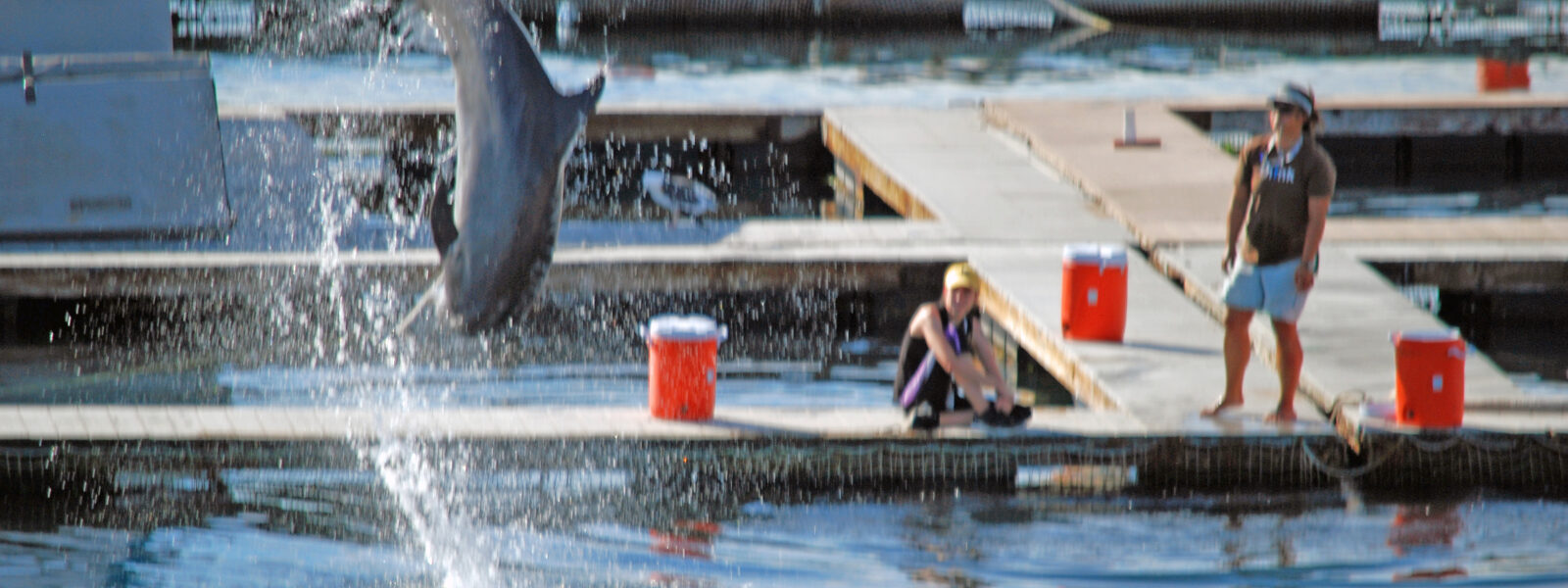

This article appeared in Hakai Magazine about the US Navy’s use (and misuse) of dolphins in warfare. The article features our colleagues Michele Bollo of San Diego and Russ Rector of Florida. Russ sadly passed away before the article was published. The International Marine Mammal Project of Earth Island Institute believes that the Navy program should be shut down and the captive dolphins retired to seaside sanctuaries.
HAKAI MAGAZINE
by Lina Zeldovich February 5, 2019
1. The Great Divide
Michele Bollo stood on Harbor Drive Pedestrian Bridge, close to the US Navy base in Point Loma, San Diego, looking through a video camera trained on a network of pens in the water below. The nine-by-nine-meter ocean corrals held 70 dolphins and 30 sea lions belonging to the US Navy Marine Mammal Program (NMMP). Bollo was there to document how the navy treated the animals. One animal, a 46-year-old bottlenose dolphin named Makai, once deployed to find mines in the Persian Gulf during the 2003 Iraq War, was sick and unable to swim. To keep him from drowning, veterinarians had placed him in a full-body flotation device. A few months later, Bollo recorded another dolphin encased in the same outfit. Through the scorching sun and freezing wind, the 65-year-old California retiree filmed Makai and the other dolphin for over five months in 2016 and 2017.
A passionate animal advocate, Bollo maintains that the two dolphins were so sick they should have been euthanized. Instead, she insists, they were kept alive for those learning how to care for sick dolphins. “[The dolphins] were tube fed, and they were given IV fluids, and their blood was drawn,” Bollo says. She adds that captive dolphins trained for human use have no quality of life—and it broke her heart to watch and film the dolphins’ ordeal day after day.
Bollo’s goal over those months was to publicly highlight the dolphins’ plight. Under normal circumstances, the dolphins reside within the navy’s compound and the public can view them only by boat or when the navy exercises them in the open ocean. But in 2016, because of a construction project, the navy moved its dolphins into the temporary pens near the bridge. Bollo and her colleague Russ Rector, a former dolphin trainer turned fervent marine mammal freedom fighter based in Florida, saw their chance to expose the dolphins’ misfortunes. They organized protests and convinced San Diego’s Channel 8 news to pay a visit and report.
The view from the bridge gave Bollo—and Rector when he watched the video—one perspective on the scene unfolding below. But there’s another view—from pen-side—of what was playing out on the water.
The US Navy sees these dolphins as part of the country’s defense system, and navy personnel treat marine mammals like crew members. The dolphins Bollo filmed weren’t helpless research subjects, they were sick crew members receiving medical treatment, says Mike Rothe, director of the NMMP. “From the earliest days, we considered our animals as partners,” Rothe says, adding that if your partners are sick, you give them the best medical care possible in hopes that they recover.
READ THE REST OF THE ARTICLE: https://www.hakaimagazine.com/features/the-great-dolphin-dilemma/
Photo of Navy Dolphin Pens in San Diego by Mark J. Palmer